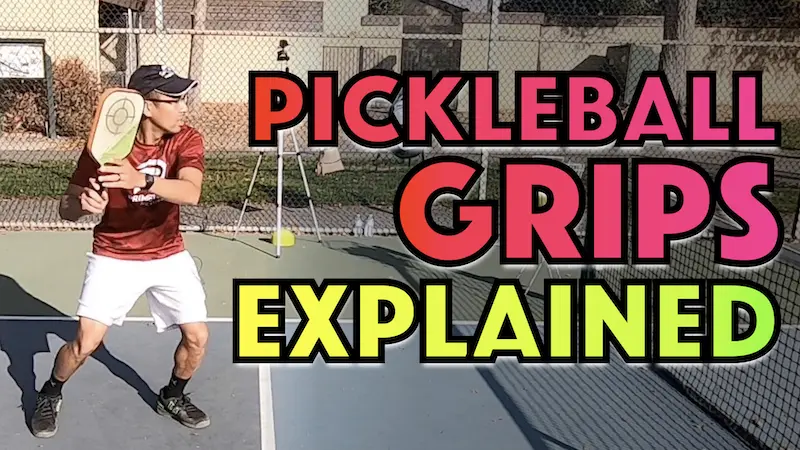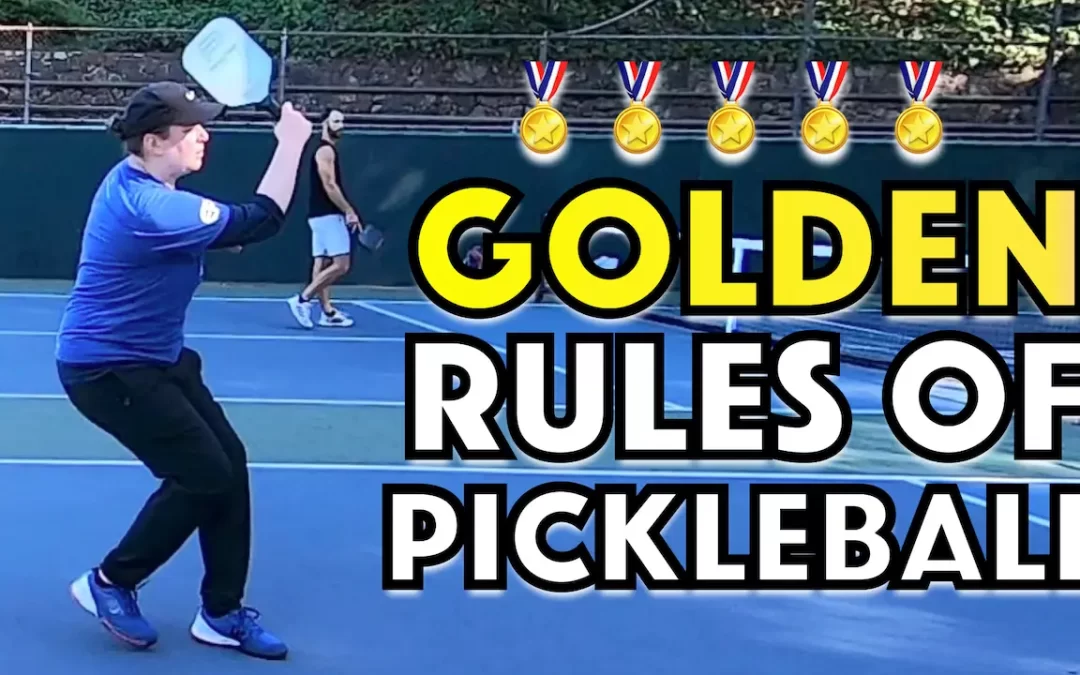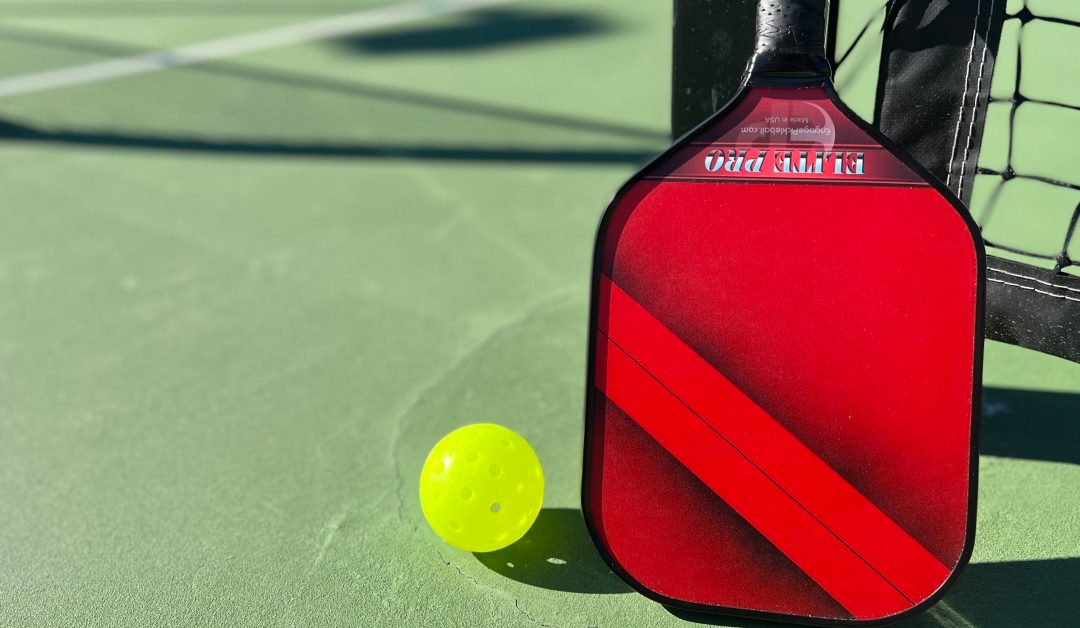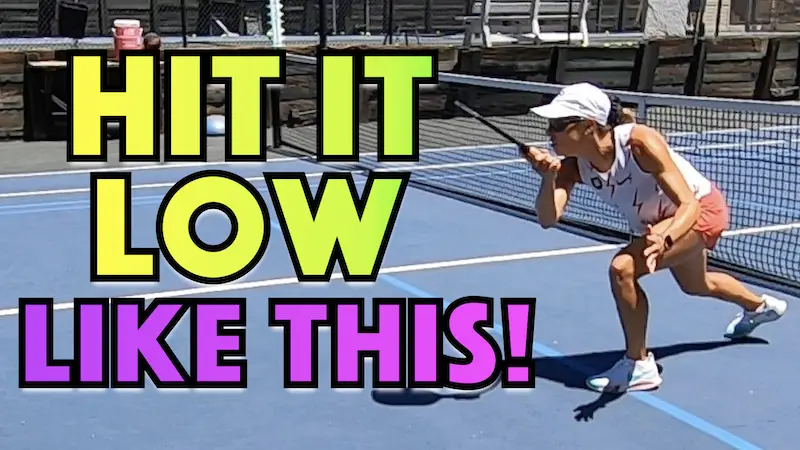We’re going to talk about the number one way to get better at pickleball fast.
It may be something you’ve heard before but I’m going to break down how I do it and how some of the best players I know do it that’s different.
This difference is what sky rockets the effectiveness of this method.
You may have heard that practice and drilling is a great way to improve your game and that is definitely true. But, there’s a generic way of doing it that can be mind-numbingly boring and doesn’t translate that well into play.
I’m going to show you how to do it in a very specific and particular way that’s really going to accelerate the process of your skill improvement and thus your success with the shots that you’re working on to be able to get them into your game play sooner and start using them to win more before long.
It’s just a smarter way and exponentially more fun way to get the job done and in less time because you’re actually developing two skills at once.
Don’t worry I’m going to break all of that down for you in this video/blog.
We’re going to get to all the specifics of this rapid way to improve in just a moment.
First, I want to give some context as to why just playing in regular games won’t get you where you want to go if you really want to jump to those higher levels of play like 4.0 and above.
It’s always really important to know why it’s time to do something differently if we want a different results than what we’re currently getting now.
The reason that playing games alone does not suffice when you’re trying to level up your game is for a couple of reasons.
Reason #1 – You Get Less Touches
Number one is that when you’re playing, especially in doubles as is predominantly played at the recreational level, you have a partner so your partner is going to get a lot of touches as well.
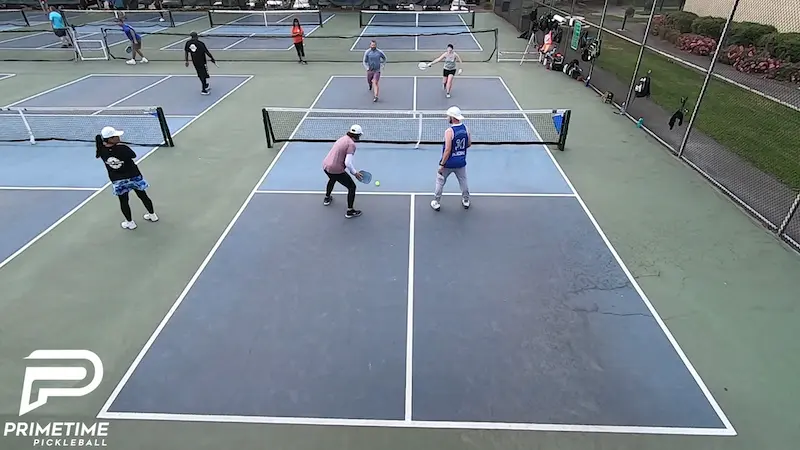
Of course that’s not a bad thing in the social setting of the game, you want everyone to be involved in the action. But, the downside of that for your personal development and getting better at your game is that they do get some touches so you’re not getting 100% of the touches.
Therefore, you’re hitting less shots per minute and per hour than you would be in a drilling session.
You’ll get so many more repetitions in drilling because you can set it up so that you’re the only player on your side. Even if it’s drilling for doubles it makes sense to just drill with another person so you get the maximum amount of reps per minute.
You can get a lot more done in even just a half hour session. You get a lot more touches in than when you’re playing a game.
Reason #2- You Can’t Zone In On Your Weak Shots
The other reason is that for everyone’s game individually, they have specific and individual things that they are strong at and that they are weak at.
The things that you want to and need to work on are going to come up in game play certainly but not as often as you need to work on it and really hone that skill and figure it out.
In drilling, you can hit it once this way if it doesn’t go well you get another one right away.
In game play, you hit your weak shot and you missed it and you might not see that shot again for a while because the ball might not even come to you for a couple of points. And, if it does, you may not even get that shot.
So, the amount of reps, not only in total as I mentioned in the previous point, but the amount of reps you’re getting per skill that you actually are needing to work on in order to make a difference in your game is very little and will make hardly a dent in what is needed to get that skill leveled up fast.
In a drilling session you can create drills that will isolate that skill right off the feed, out of the gate, and you’re seeing that rep, after rep, after rep, after a rep.
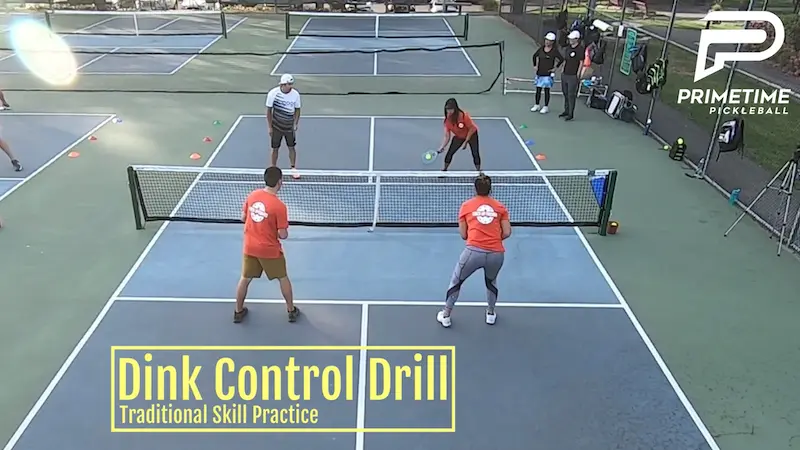
That’s really going to go a long way towards helping you improve things quickly because you’re going to hit a shot, assess, and adjust right away.
That assessment and adjustment is really how our new skills are developed and gelled.
You need some immediate feedback and then you need to be adjusting off that feedback right away.
That way you can recalibrate.
That’s really how your skill starts to formulate and improve in a significant way. It’s with those isolated and continuous reps in a short period of time.
This is why you really do need to drill if you hope to get better.
There is a way to amp up that type of scenario that really helps you inject that new skill that you’re looking to add or improve on and put it into a game faster.
It’s with constraint based games.
What does that mean?
We already talked about the constraint part.
Maybe you want to work on your third shot drop so you go position yourself at the baseline. You have a partner position themselves at the non-volley zone line and they feed you a drop. You drop it in and they send another one deep so you can continually drop.
Of course you they can have a turn as well when you’re up at the non-volleys zone line and they’re dropping.
Let’s assume that you are alternating because that’s a good idea. You want them to be able to get work in on whatever skill that it is they want as well.
It might be something different entirely and they’ll get their turn.
So, that’s the constrained part. You start in the situation that you’re looking to work on. You don’t start with a serve and return type situation as points do.
You constrain it and isolate it so that the feed comes right into that skill that you’re working on and you start every feed that way.
Remember I said constraint based games, so the games portion is that you can then score that scenario.
Let’s go back to that initial example. You’re at the baseline working on your drops, your game partner is at the non-volley zone line working on being able to keep a player back. Your partner is definitely still working on a skill.
You could just play a game to five but that doesn’t really work for that type of situation. There’s another option that works better.
A game where its scored to five or to seven or to three, etc. where you’re both striving to achieve a certain number of points that is the same in order to win the game can work when you guys start off the point in an equal setting.
For example, maybe you’re both at the non-volley zone line and you both start out of the dinking scenario and then you play a game from that position. You start off equal so you can score a game to five in an equal type of scenario from the start when neither player has an advantage.
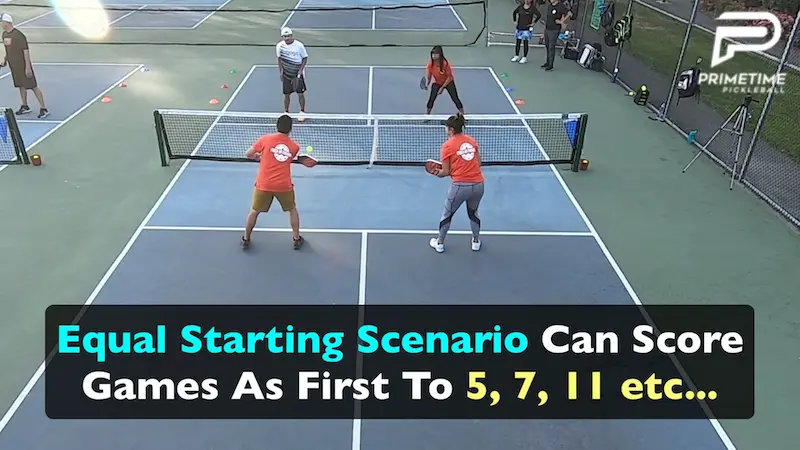
But, when you’re starting in the way we initially mentioned above, when you’re the dropper and there’s someone at the non-volleys zone line, they have an advantage, they’re in the stronger position.
They’re up at the line, you’re attempting to neutralize and come in and meet them at the net.
You’re at the baseline hitting a tougher shot. A drop is definitely tougher than what they’re doing which is trying to keep you back.
So, a great way to deal with that is they have to win more points than you do in order to win the game. A very good kind of balanced type of scoring system for that is that they have to score 11points because they’re in the advantageous position and you only have to score 7 because it’s going to be harder for you to win points since you’re in the disadvantage from where you’re starting.
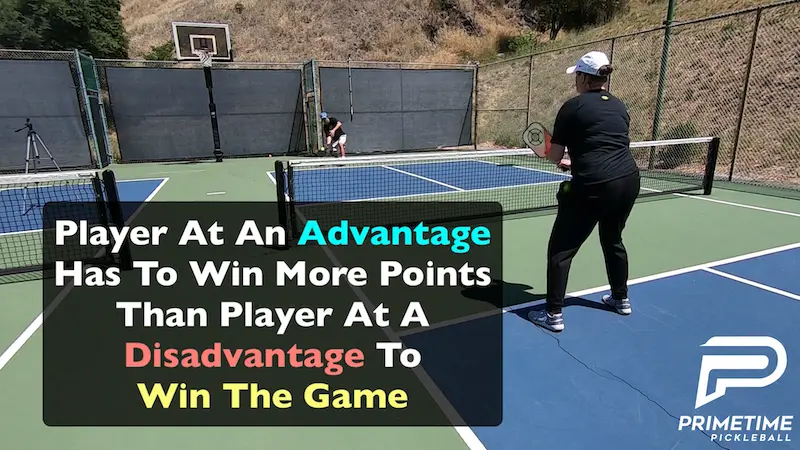
The huge benefits that come from doing it this way are as follows:
Benefit #1 – It Keeps It Fun
Number one, is that it keeps it really fun. It’s competitive. You’re striving to win the point so there’s something on the line and it’s not just mindless drilling. It’s gamified.
When things are gamified and competitive they automatically become more fun.
Especially for a pickleball player who is already out there competing and they like pickleball. Typically, they’re going to find gamifying things more fun.
Benefit #2- Added Pressure
The other thing is that it puts pressure on you.
Now there’s something on the line when you miss something.
In just non-game-based drilling you missed it but there wasn’t a point on the line.
When there’s points on the line there’s always something more to lose so you almost can’t help it. It’s human nature.
You’re going to try harder. You’re going to be more invested.
Benefit #3- Real Game Simulation
The other thing is that because there’s pressure on you that simulates much more what a game is like. Not only are you working that skill you’re working on it in a pressurized situation, in a competitive situation, that you’ve constructed.
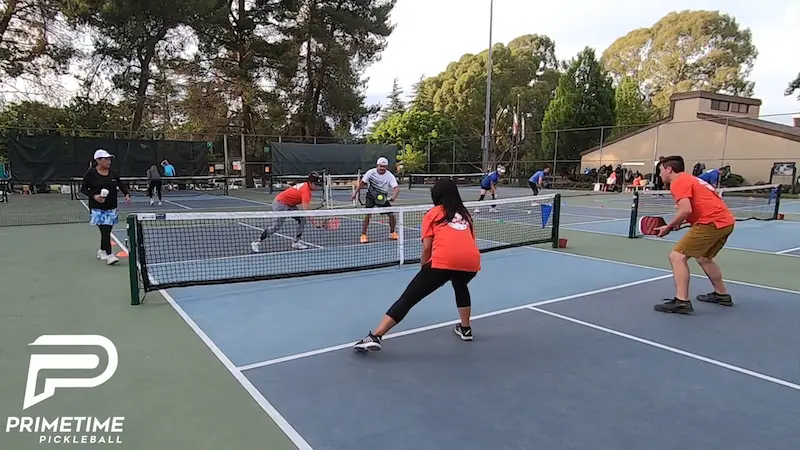
So, that certainly is going to be more easily translated into a game scenario where you are doing things under pressure, the points on the line, you don’t want to let your partner down, etc.
You definitely don’t want to lose in general so if you drill in this gamified way it adds another layer of skill on top of just the skill of being able to execute the shot.
You have to be able to execute it under pressure when there are points on the line.
That combination is what’s going to make it much easier to inject into regular game play when the factor of that pressure is also present.
There’s a lot of benefits to doing it this way as I’ve discussed.
If you already are doing drills, great! Try to gamify them as much as possible.
You can start out by really trying to focus on getting the stroke right. You can start out with not gamifying it.
But, when you get to that point where you know how to hit it and you’re hitting it correctly you can start to inject the gamification into it to really level up that skill even more and more.
This way you can make it so that it does show up for you in competition.
If you’re not drilling at all but you know you should and you kind of want to but there’s something holding you back then this is a great way to make it more fun and you’ll be more likely to get yourself to the courts, drill the shots you need to work on in a gamified situation that will inevitably help you when you’re competing in real games.
This is a great tool that’s used by the best players and there’s no reason why you shouldn’t take advantage of it and use it to help you improve your pickleball as well.
I want to give a shout out to Julie Heitmann and her Fired Up Friday training group out of Concord, California who get together every Friday for two hours of practice.
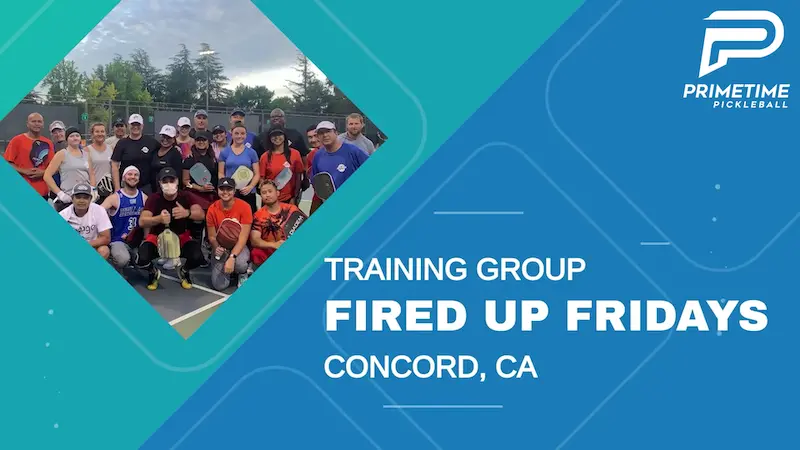
They start with traditional drilling to really focus on getting the technique of a skill down. Then, they roll into game based drilling like I covered here today and then they cap off the end of their session with full pickleball points to bring everything together.
It’s no surprise that they routinely win medals at tournaments.
If you can, find such a group in your local area that will really make a difference in your game. If there isn’t one, then consider starting one or you can certainly do all of this with a training buddy.
Get out there and give it a go!
Training and drilling really can be a lot of fun when you do it in a smart and strategic way and build into your skill from where you are to where you want to be.


